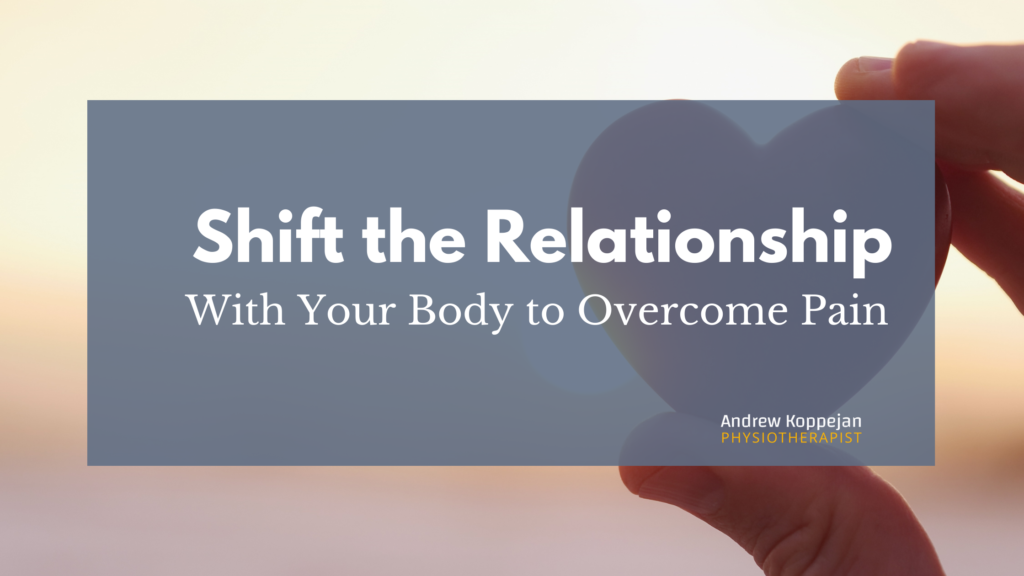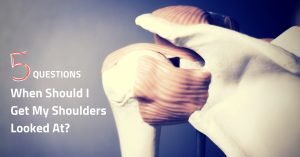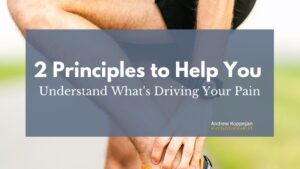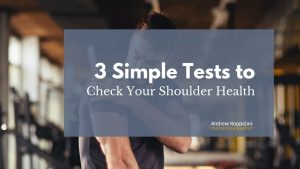Suffering from physical pain is a highly unpleasant experience. And we’re conditioned in our society to push through physical pain. Pain can be seen as a sign of weakness or that we’re not tough enough.
When you’re in constant pain you may also start to view your pain as a weakness. Not only that, we can end up seeing our injured or painful body area as something separate from us… an enemy within ourselves.
But what if there was an easier way?
What if we didn’t have to fight against our bodies, but instead found the right key to move freely without pain?
In this blog post I want to talk about shifting your perspective from pushing against your body to a place where we shift our relationship to pain so that you can move forward with moving freely without pain.
Your Body is Not the Enemy
When we’re in pain, we can often see our body (or the painful part of our body) as the problem.
We tell ourselves, “if only my knee didn’t hurt, then I’d be able to…”. Because this part of our body is holding us back from activity and living, we can build resentment towards this area of the body.
This can lead to seeing our injured or painful body part as something separate from the rest of our body. An orphan waiting to be let back in.
This resentment can build and we perceive this body part as the enemy and we push against it.
I think that’s a mistake. When in pain, I’ve found that my body is not an enemy to be vanquished. Instead it needs more love from me – both physically (with exercises or stretches) and emotionally (through self-compassion).
More Than Meets the Eye
It’s easy to think of physiotherapy exercises as a means to improve range of motion and increase strength.
These exercises are that, but so much more.
Not only do the exercises I give help to improve physical function, but they also help to integrate your injured area emotionally and mentally. Pain science is showing that the physical and psychological are deeply intertwined.
Our nervous system aims to keep us safe.
It scans our environment and helps us avoid danger. Pain is a mechanism our body uses to help us avoid danger and keep us safe. Adding these exercises to your routine, can help signal to your nervous system that movement of the painful area is ok and non-threatening.
How to Open Your Body to Deeper Healing
As mentioned, it’s helpful to shift our relationship with to help us move with less pain.
The first important shift is one of perspective. We often can feel that our recovery has to be hard and challenging.
It can be helpful to be open to the idea that getting better can be done with less resistance.
One way to help move into a place of less resistance is bringing new awareness to your breathing when moving, especially painful movements.
Breathing calmly and with intention during movement helps inform your nervous system that movement is safe and good.
Another important way to deepen our healing progress is to choose gratitude with the movements and activities we do. It’s so easy when we’re in pain to focus on things we can’t do, the activities we’re missing out on. Being grateful for the movements we do have, helps us to focus on our current capacity and deepens our acceptance of our situation which allows us to move forward with greater energy and compassion.
Finally, it is important to build a new awareness of how we move.
It’s so easy in life to move without an awareness of how movements of the body are done. Often times we can be irritating our joint and muscle tissues because of faulty movement patterns that have developed unknowingly over time. By improving our awareness of our movements, we can make adjustments to our patterns of movement and reduce the strain on tissues.
Practices such as yoga and chi gong are so helpful because it helps build our skill in mindful movement. There are a number of different ways to bring greater awareness to your movements. But a simple way to add increased awareness to your movement is looking in a mirror as you do movements. This feedback helps inform our brain of how accurate our perception of our movement is compared to the reality of our movement.
Assessing movement patterns is important aspect of my physiotherapy assessments with patients and I go through a variety of movements to understand ways to optimize movement patterns that reduce tissue irritation.
Here’s the Takeaway
Moving past pain that seems to persist requires not only expert evaluation and treatment, but also a shifting of our relationship to the painful area of our body. By moving away from resentment and resistance into a place of self-compassion and integration, we can open up healing and bringing awareness and self-compassion.
Choosing gratitude with the movements and activities we can do can be a deeply integrating experience that allows us to move forward with greater energy and clarity.
And finally, being curious about how we move and understanding our movement habits can help us build healthier movement patterns and reduce stress on irritated tissues.



